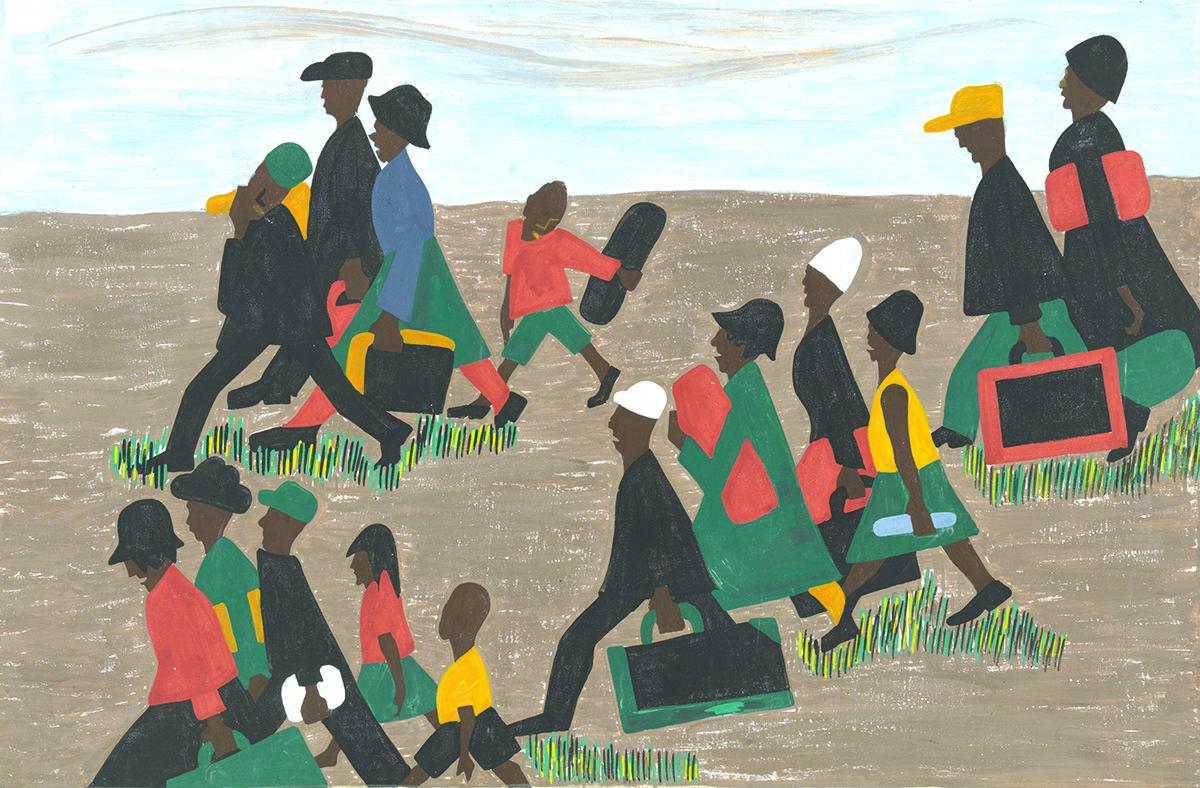I initially wanted to write this blog post commending and analyzing the intensely vivid imagery apparent in Anne Moody’s memoir, Coming of Age in Mississippi. So, I Googled “artwork during the Civil Rights Movement” and began researching the many other forms of art that were created to commemorate the severe hardships faced by black people.
As I have never researched artwork during the Civil Rights Movement, this was an exciting and perfect time to begin. As I originally hypothesized, artwork created during the CRM was a means by which artists could convey their own interpretation of the tragic events that occurred at the time. Whether through sculpture, painting, clay, or several other forms, every piece of art had its own story and told its own tragedy or truth. Similarly, most works of art were radical representations aimed to provoke conversation, thought, and action amongst the art’s viewers.
Tying this back to Moody’s memoir, the original inspiration for this blog post came when I was reading about her experiences sitting in at Woolworth’s. The descriptions of blood running from mouths, kicking against heads with hard-soled shoes, being dragged on the floor by the hair, and so much more made me cringe (pg. 288-289, ch. 22). Moody’s memoir, too, is only writing, not to say that I discredit the power of this writing at all. However, the disturbing impression that visual artwork can have on someone, especially an outsider, is astounding. Even more astounding is the power that visual art can possess when written words are already incredibly moving. In summery of the very brief points I have made here, the graphic artwork of the Civil Rights Movement sparked debate and sadness within all viewers, which is something that words can only begin to accomplish.
- The Power of Imagery in Advancing Civil Rights
- Artists of the Civil Rights Movement: A Retrospective

Excellent post, Katie!
“The mother smiled to know her child
Was in the sacred place,
But that smile was the last smile
To come upon her face.
For when she heard the explosion,
Her eyes grew wet and wild.
She raced through the streets of Birmingham
Calling for her child.”
This is a passage from the poem, “Ballad of Birmingham” by Dudley Randall. It was written in 1965 and it refers to the 16th Street Baptist Church bombing of 1963.
Randall juxtaposes childhood innocence in the tone of the poem with violence of the subject matter. The rhyme scheme evokes a nursery rhyme that ends tragically. This poem creates sympathy in the reader with the common theme of childhood. However, it yanks away all feelings of happiness and safety at the end when the bombing occurs. “Ballad of Birmingham” is purposefully upsetting to create in the reader a feeling of injustice. I think the poet’s purpose was to show how black lives are always in danger. All black people are subject to racial violence, whether they are worshiping in a church or marching in a protest. By writing this poem, I think Randall is arguing for black rights and black power. The poem shows the necessity of protesting for equality and freedom for black people.
I believe it is important to create art that disturbs people. Randall’s poem turns the Alabama bombing into more than just a news story. Poems like this make you feel something for the victims. Art is political as well as emotional.